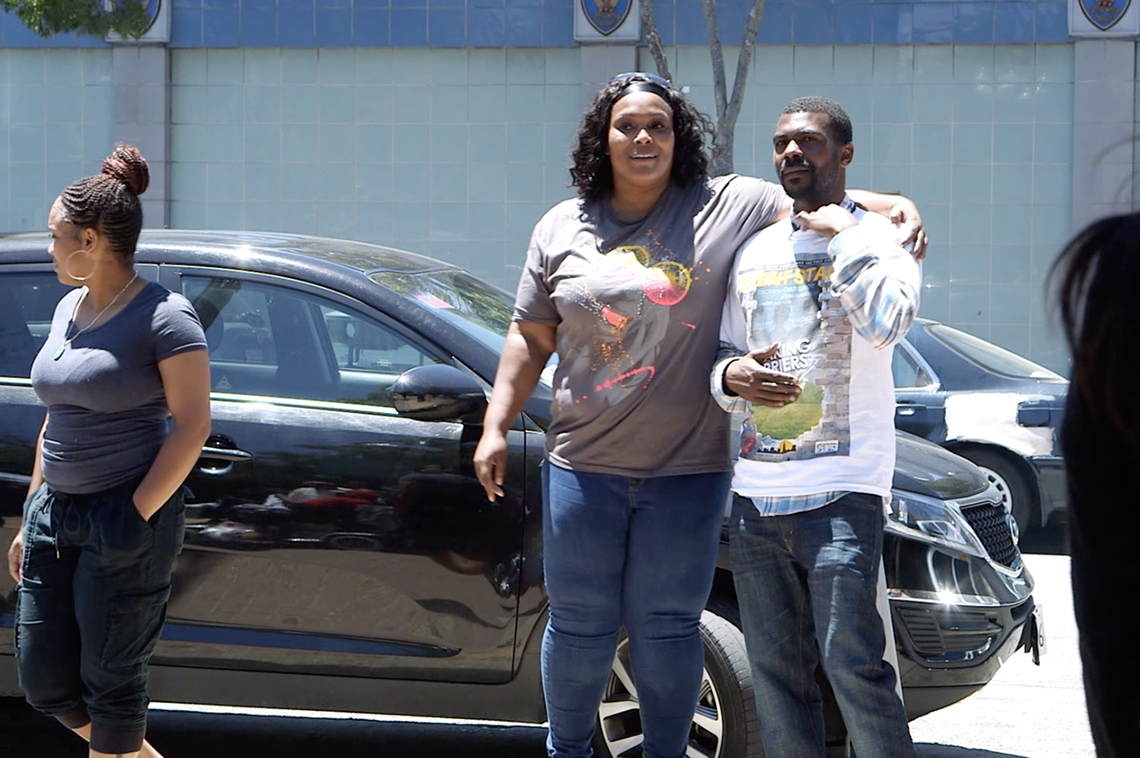
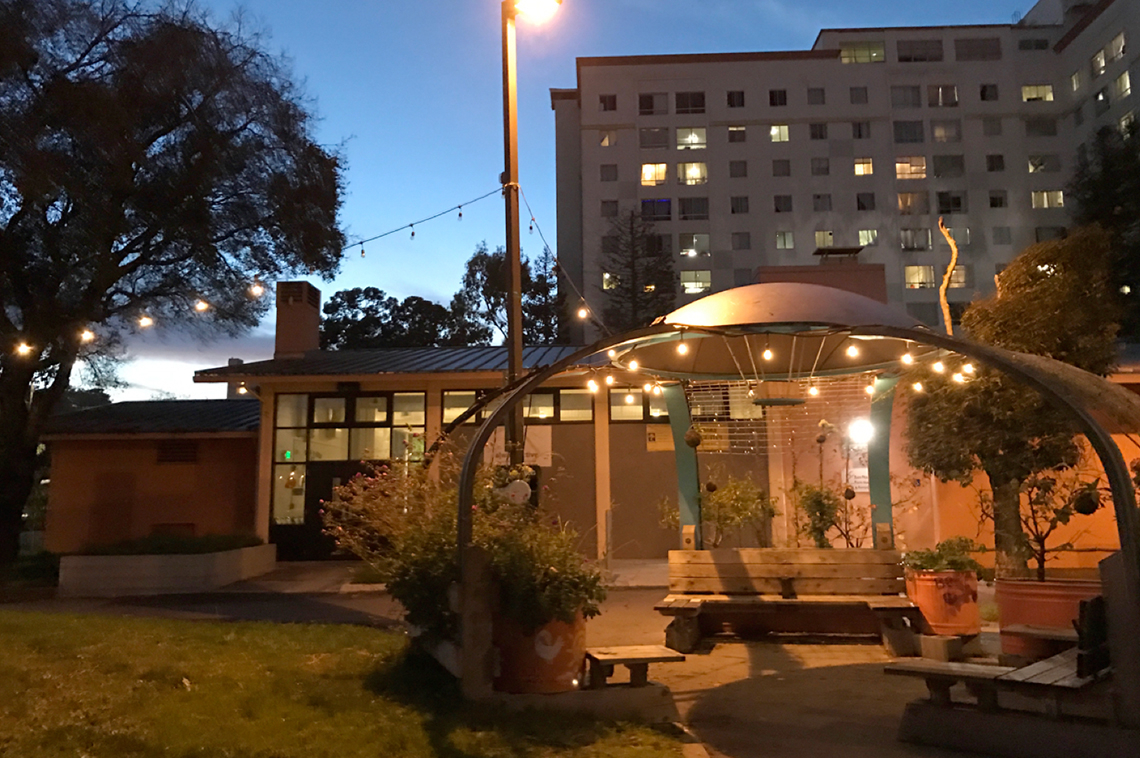
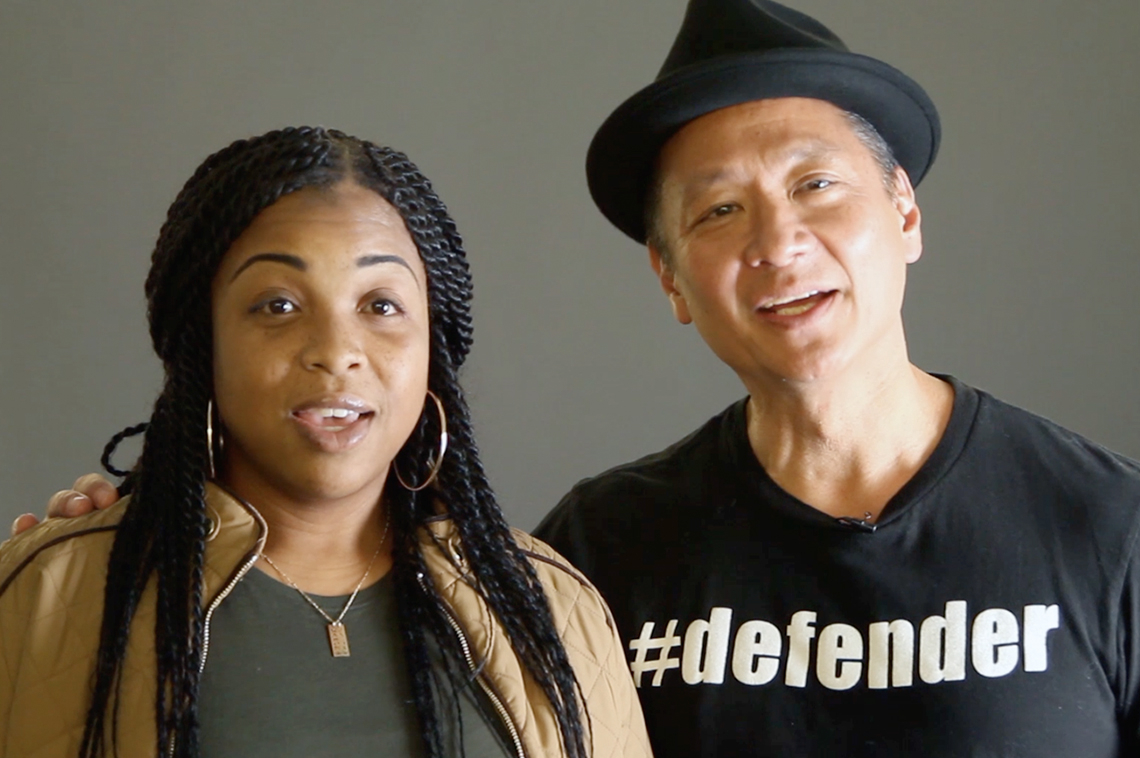
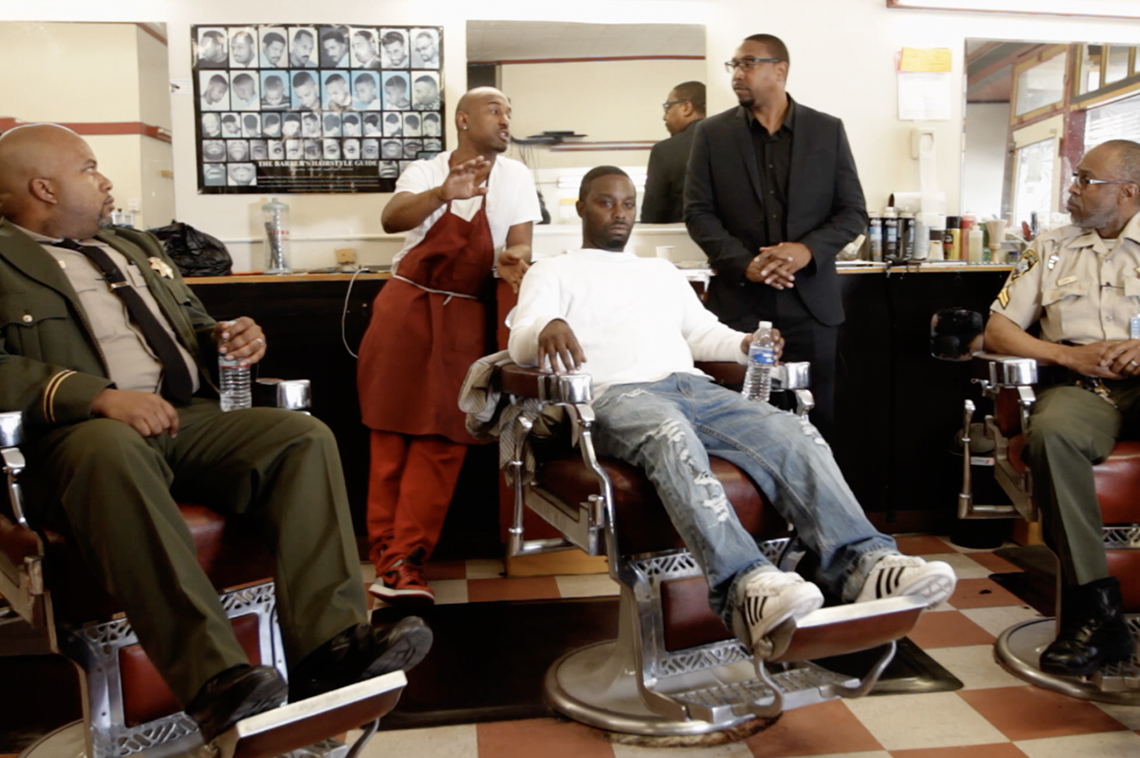
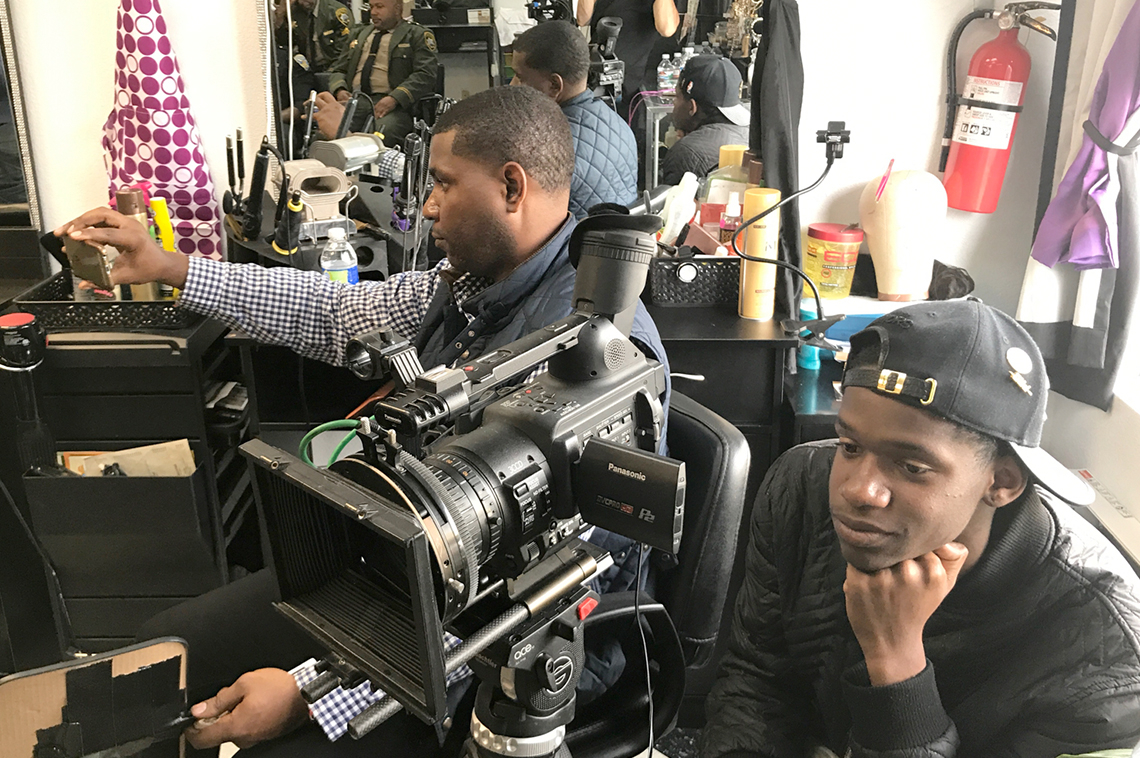
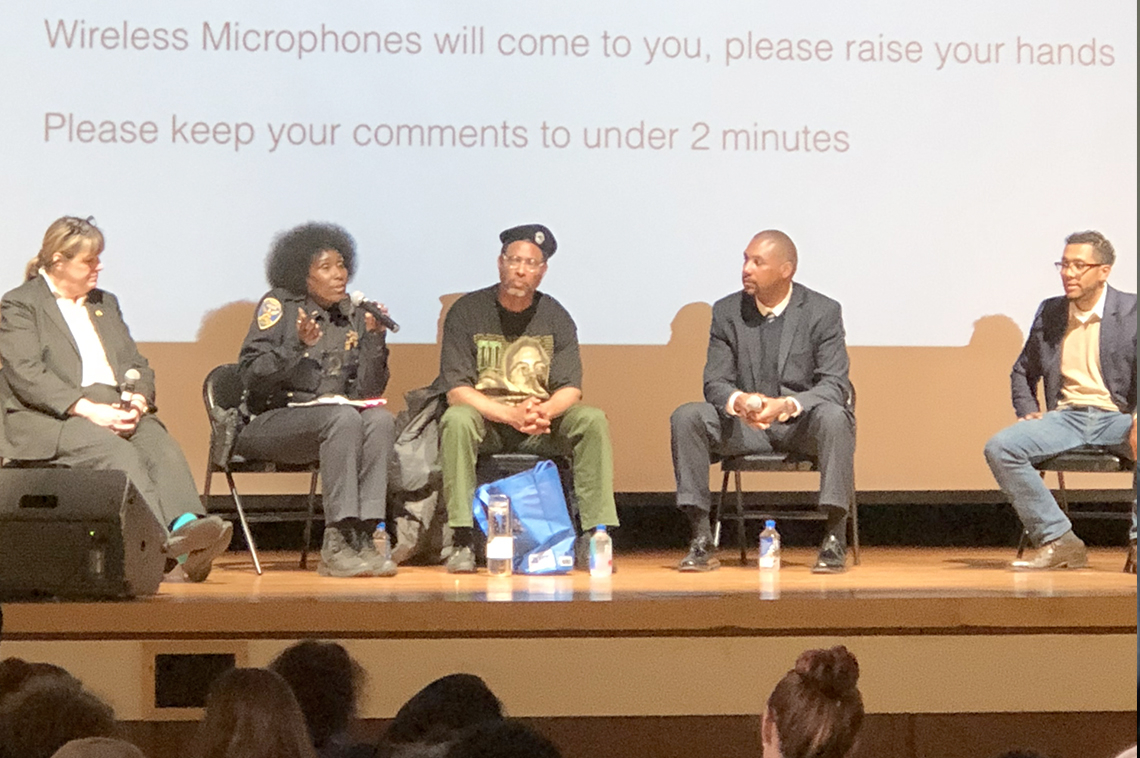
As a documentary filmmaker, I’ve often tackled social justice issues, and used storytelling to advocate for equitable solutions to community problems. Creative placemaking — working to make a place better for all people who inhabit and use it — has been an exciting evolution of that practice.
I’m a co-founder of Citizen Film, a non-profit documentary media organization in San Francisco. In 2014, we were honored to receive, along with our partner Green Streets, a grant from ArtPlace. The grant sparked a unique collaboration between the primarily Black residents of the Western Addition neighborhood, city agencies, and non-profits to re-imagine the Buchanan Mall, a park cutting through public housing near Citizen Film’s office. Through a process of collaborative documentary storytelling, the community arrived at a vision of what the Mall could be — a vision rooted in the collective memory of what the Black community in San Francisco once had been. In November 2015, we held a day-long barbecue celebration to mark the completion of Phase 1 of our project. And in November 2018, local voters will decide on a bond measure that could help with Phase 2.
The bond could advance the physical side of our creative placemaking effort: planting gardens, building playgrounds, installing art. But of course, creative placemaking is about more than just the physical. As filmmakers, we’ve continued to seek ways to make the space emotionally shovel-ready. We’re using this “waiting” period to address relevant issues in the community, and to develop and strengthen our partner relationships.
For example, we’re producing a short video about Breaking Barriers, a series of resource fairs held on the Mall by Success Center SF to help residents overcome barriers to employment. On the most basic level, the video will promote the fairs to potential clients, participating service organizations, and funders. On another level, community film shoots are a great way to meet people and forge new alliances. Finally, by sharing rough cuts-in-progress with the people portrayed in our films, and by actively soliciting and heeding their feedback, we’re helping the community take control of its own narrative.
We’ve also responded to calls from the community to address topics they find timely and urgent. Often, these topics are linked to issues we learned about during the Mall activation and design process. During Phase 1, residents repeatedly expressed concerns about community safety, advocating for — and participating in the design of — better lighting on the Mall. Now that new lights are installed, we’re turning to issues that underlie community safety, such as criminal justice reform. With our partner non-profit Collective Impact, we recently produced a short PSA raising awareness about bail reform efforts in San Francisco, starring youth leaders from our Mall Design Taskforce as well as participants from Collective Impact’s Mo’Magic initiative.
In another example, local non-profit Young Community Developers approached us to co-produce a documentary about community-police relations. Together, we convened a series of conversations between civilians and law enforcement officers in Black barbershops around the city. The resulting film, Chop Shop, tackles issues such as implicit bias, the role of people of color in law enforcement, and police violence. Chop Shop is currently screening in venues around San Francisco, followed by discussions in which audience members often share their own personal stories of interaction with law enforcement. As you might expect, we’ve been filming these discussions as well, never knowing where the process of collaborative storytelling might lead us.
This period has been a chance to reflect on the ongoing exchange of resources that is critical to our project. Citizen Film brings technical skills to the table, such as lighting, videography, editing, and distribution. But, in a sense, it’s really neighborhood residents who “make” the movie by relating their personal stories for the camera. And it’s the residents who generate the most impact, by sharing the films via their social networks (both digital and non-digital) with audiences we could never reach by ourselves.
We hope the community has come to see Citizen Film as an integrated part of itself — not just a camera pointed in its direction, but one it can pick up for its own purposes. We help people and partner organizations produce videos for their grant applications and websites. We’ve brought in past partners, such as a community gardening non-profit, to participate in the beautification of the neighborhood. Bit by bit, these mini collaborations create strength in the community — which is every bit as vital as the physical side of creative placemaking. Activation and ribbon-cutting ceremonies are wonderful. But we really activate a place not by cutting ribbons, but by creating conversations.
The Buchanan Mall Activation was a partnership between Citizen Film, Green Streets, Trust for Public Land, The Exploratorium and San Francisco Recreation and Parks Department.





